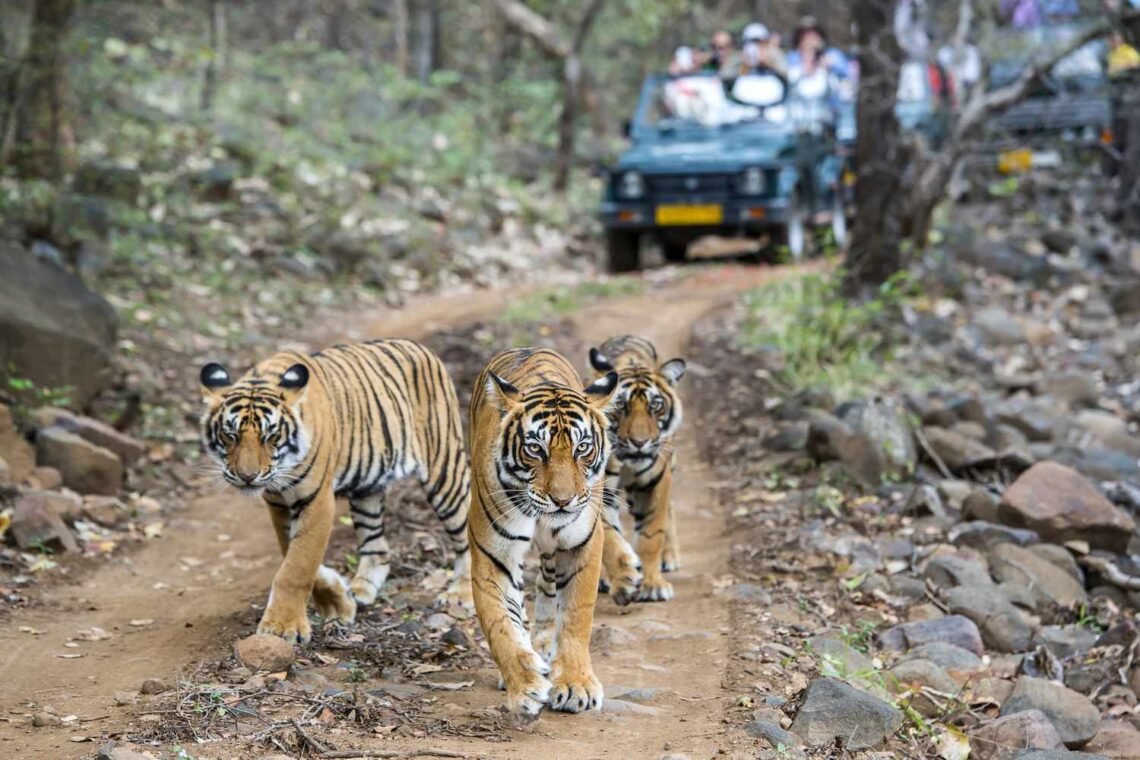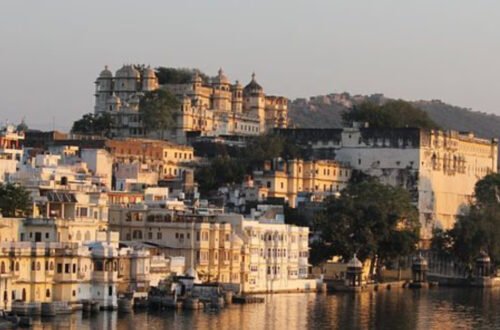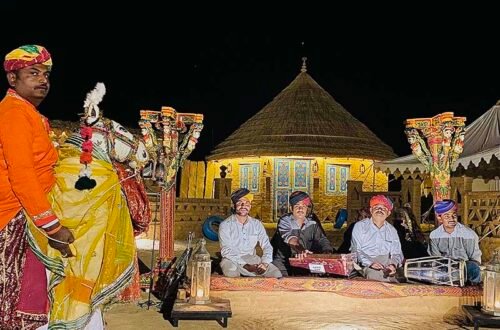India is a land where history breathes through majestic forts, ancient temples, and bustling markets — a country that blends spirituality, wildlife, and vibrant cultures like nowhere else. For travelers seeking a curated experience of the most iconic destinations in North India, the Golden Triangle with Ranthambore Tour offers an unforgettable journey through grandeur and wilderness. This meticulously planned route combines the cultural richness of Delhi, Agra, and Jaipur with the raw beauty of Ranthambore National Park, creating a multifaceted travel experience.
Unveiling the Golden Triangle: A Cultural Odyssey
The Golden Triangle refers to the trio of Delhi, Agra, and Jaipur — three cities that form a triangle on the map and represent India’s historic and architectural brilliance. This classic circuit gives travelers a taste of Mughal, Rajput, and British influences, offering heritage-filled stops at every turn. Starting in Delhi, you encounter two worlds in one city. Old Delhi enchants with its chaotic lanes, ancient bazaars, and the Red Fort, while New Delhi charms with colonial-era buildings and manicured boulevards.
Agra, the next point on the triangle, is the city of eternal love, home to the magnificent Taj Mahal. This UNESCO World Heritage site alone is reason enough to visit, but Agra Fort and Mehtab Bagh add further layers to the historical narrative. Jaipur, known as the Pink City, invites travelers into a regal past with majestic forts, colorful bazaars, and timeless palaces. Amber Fort, City Palace, and Hawa Mahal reflect the splendor of Rajasthan’s royal legacy.
Why Ranthambore Changes Everything
While the Golden Triangle tour is already packed with heritage and grandeur, the addition of Ranthambore National Park transforms the journey into something even more extraordinary. Located in southeastern Rajasthan, Ranthambore is one of India’s premier tiger reserves. It offers an authentic wildlife experience with thrilling jeep safaris, and sightings of tigers, leopards, sloth bears, and marsh crocodiles.
Unlike other wildlife reserves, Ranthambore’s landscape is dramatically different — ancient ruins dotting the forest, dry deciduous woodlands, and a towering fort that dates back to the 10th century. This blend of nature and history creates a safari experience that feels deeply immersive, almost like walking through a forgotten kingdom reclaimed by the wild.
Expert Planning for a Seamless Experience
Traveling across four destinations with distinct identities can be overwhelming without proper guidance. This is where a seasoned Travel agency in Rajasthan proves essential. Expertly crafted itineraries, vetted accommodations, and local guides fluent in regional history ensure travelers don’t miss the finer details. Their on-ground knowledge adds immense value — whether it’s knowing the best time for a tiger safari or finding an authentic Rajasthani meal in Jaipur’s winding streets.
Choosing a reputable agency not only enhances your journey’s efficiency but also ensures safety, cultural sensitivity, and a responsible travel footprint. It’s not just about transportation and lodging; it’s about curating meaningful encounters with India’s heritage and wildlife.
Top Highlights of the Golden Triangle with Ranthambore
- Tiger Safari in Ranthambore: An open-gypsy safari through Zones 1–6 offers the highest chances of spotting Bengal tigers in their natural habitat.
- The Taj Mahal at Sunrise: Early morning visits offer softer light and fewer crowds, elevating the experience of this iconic monument.
- Amber Fort Elephant Ride: While elephant rides are being phased out in favor of ethical tourism, Amber Fort remains a jewel of Rajput architecture.
- Qutub Minar and Humayun’s Tomb in Delhi: These historical structures reflect the Indo-Islamic style that shaped much of North India’s heritage.
- Street Food in Chandni Chowk: Taste authentic flavors, from spicy chaat to sweet jalebis, in one of Delhi’s oldest marketplaces.
- Artisanal Markets in Jaipur: Shop for hand-block printed textiles, blue pottery, and silver jewelry in the colorful bazaars.
- Ranthambore Fort Trek: A lesser-known activity, this uphill walk offers panoramic views of the park and insights into the region’s historical defenses.
Who Should Take This Tour
This itinerary suits history buffs, wildlife photographers, first-time visitors to India, and even families seeking a blend of culture and nature. The varied pace — bustling cities to tranquil forest trails — ensures there’s something for everyone. Photographers will find diverse subjects: architectural marvels, candid street scenes, and dramatic wildlife encounters.
Travel Tips for the Golden Triangle with Ranthambore
- Best Time to Visit: October to April offers pleasant weather and higher chances of tiger sightings. Ranthambore remains closed during the monsoon (July–September).
- Cultural Etiquette: Dress modestly at religious sites, and always ask before photographing locals, especially in rural or tribal areas.
- Pack Smart: Lightweight clothing for cities, a light jacket for early morning safaris, and sunscreen for Rajasthan’s sunny days.
- Travel Insurance: Ensure your policy covers wildlife activities and medical emergencies.
Final Thoughts
The Golden Triangle with Ranthambore Tour offers more than just a sightseeing itinerary — it’s an emotional journey through India’s soul. From the spiritual calm of Mughal tombs to the adrenaline rush of spotting a tiger in the wild, this experience is crafted for those who seek depth in their travels. It’s not about checking places off a list; it’s about understanding the stories that have shaped a civilization. And with the right guidance, it becomes not just a trip — but a transformation.





